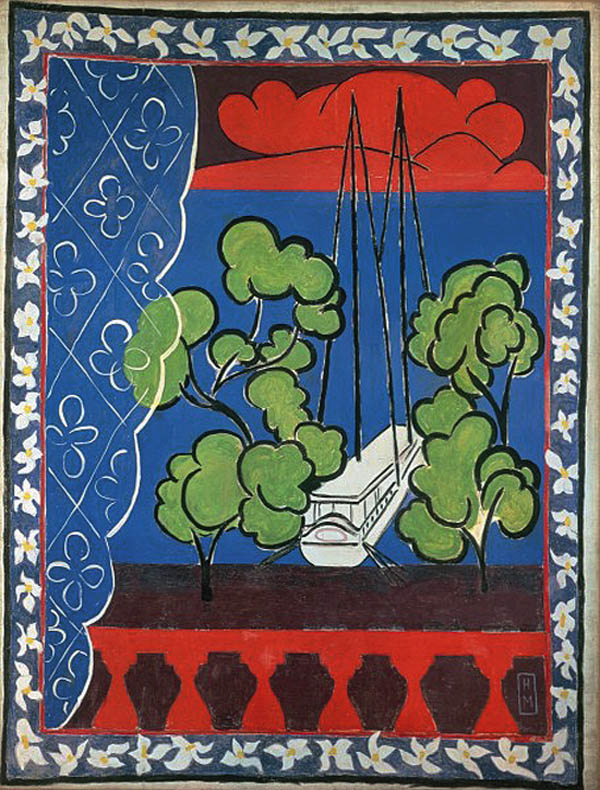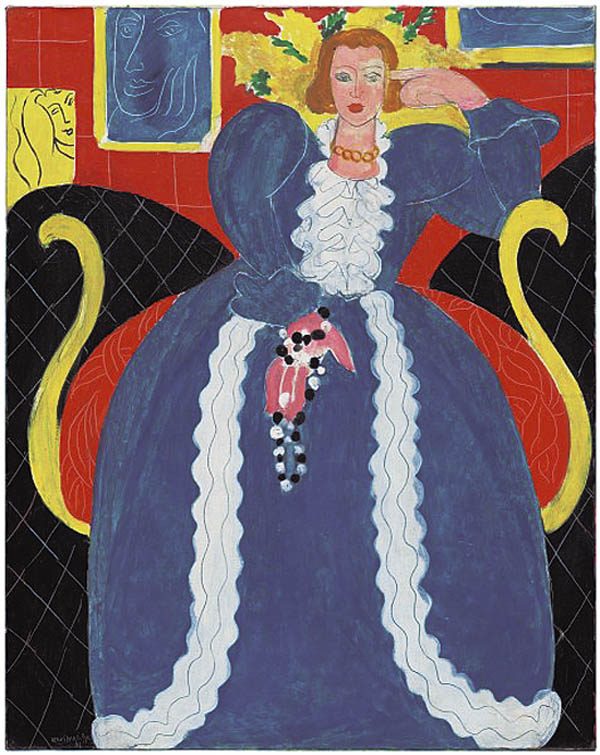Three Major Institutions Collaborate To Present First Major Exhibition Devoted To Matisse In The 1930s
Philadelphia Museum Of Art To Host Beginning Oct. 20
September 16, 2022
The Philadelphia Museum of Art, in collaboration with the Muse de lOrangerie in Paris and the Muse Matisse Nice, will present the first exhibition ever dedicated to the pivotal decade of the 1930s in the art of Henri Matisse (18691954), one of the giants of 20th-century art. Opening first in Philadelphia, the only United States venue, the exhibition, Matisse in the 1930s, will present more than 100 works, ranging from both renowned and rarely seen paintings and sculptures, to drawings and prints, to illustrated books. It will also feature documentary photographs and films. The exhibition will be accompanied by a lavishly illustrated scholarly catalogue. Matthew Affron, Muriel and Philip Berman Curator of Modern Art at the Philadelphia Museum of Art; Ccile Debray, president of the Muse National Picasso-Paris; and Claudine Grammont, director of the Muse Matisse Nice, comprise the curatorial team. Because this transformative decade in Matisses career has never been treated in a stand-alone exhibition before, visitors will have a rare opportunity to immerse themselves in the very process through which Matisse generated a new creative approach and outlook in the later part of his career, while also witnessing the dramatically revitalized production that followed from his eventful visit to Philadelphia in 1930. Only through such an institutional partnership can we so vividly tell this story, as each of our collaborating museums is uniquely and deeply connected to Matisse. Between works on view at the Philadelphia Museum of Art and complementary holdings down the street at the Barnes Foundation, Philadelphia this fall will be an especially exciting city in which to experience Matisses extraordinary art, stated Affron. Matisse spent most of his life in Nice, and Mediterranean splendor permeates his work, added Claudine Grammont. He came back from the U.S. to France with a broadened vision of the world that had long-lasting effects, as the 30s were rejuvenating for this pioneer of modernity. A new Matissian map was drawn with the commission of a mural for the Barnes Foundation: it was consequently between Philadelphia and Nice that the main axis for these decisive years runs. The Muse Matisse in Nice, whose collection is rich in art linked to this period of creation, is particularly happy to collaborate with the Philadelphia Museum of Art and the Muse de lOrangerie to demonstrate the powerful renewal in the artists work during this key period. The Dance (193133), Matisses decoration for the Barnes Foundation, is closely linked to the artists return to a modernist style in the 1930s. These years, when Matisse was inspired by his trips to the United States, promoted in Paris by the journal Cahiers dart, faced off with Picasso at the Paul Rosenberg gallery while his radical preWorld War I paintings were seen at Paul Guillaumes, assisted the organization of different retrospective exhibitions, and worked on his art in Nice, made history as the crucible of a fascinating modernist transformation, stated Ccile Debray. Our three museums in Philadelphia, Paris, and Nice offer a special, much-anticipated opportunity for a new and unparalleled exhibition about this decade. Above all, the collaboration marks a friendship. I would like to salute Claudine Grammont and Matthew Affron, my friends and colleagues, concluded Debray. Matisse in the 1930s will assemble a rich array of works from public and private collections in the United States and Europe. It will explore the remarkable changes in style that followed as Matisse discovered different ways of working across the mediums of easel and decorative painting, sculpture, printmaking, drawing, and the illustrated book. The exhibition will demonstrate that what he achieved during the 1930s represented nothing less than a total revitalization of his artistic vision. Organization of the Exhibition The narrative is organized chronologically, with a prelude called Interiors and Odalisques that looks at Matisses so-called Nice period of 191730. This section will focus on the artists depiction of studio models, often in settings filled with decorative textiles and other items from various regions of the Islamic world that Matisse visited; it will feature such important works as The Three Sisters (1917, Muse de lOrangerie) and Woman With a Veil (1927, Museum of Modern Art), which will offer viewers a chance to examine Matisses attempt to synthesize decorative design, fashion, and the sensuality of the female figure into a modern aesthetic idiom, an effort much debated both in its day and in more recent years. The narrative of Matisse in the 1930s closes with an epilogue centered on a major turning point that came soon after the end of the decade. In January 1941, Matisse underwent a risky operation for abdominal cancer; after this brush with death, he spoke of embarking on a second artistic life. At first, he painted little, but instead focused on a major effort in drawing: a corpus of 158 drawings of models in the studio and fruit and floral still lifes known as Themes and Variations. The exhibitions epilogue will highlight two complete sets of Themes and Variations drawings, together with a small selection of contemporaneous paintings on the same subjects as Matisses summation of what he had accomplished in the previous ten years. With their serial and open-ended approach, as in Theme P, which depicts a woman in a pleated dress in a variety of poses, the Themes and Variations confirmed that, as the 1930s turned to the 1940s, Matisses notion of creative process prioritized the flux of fleeting perceptions and emotions over the fully finished, definitive statement. The exhibit will be on view at the Philadelphia Museum of Art from Oct. 20 to Jan. 29, 2023. The museum is located on the Benjamin Franklin Parkway at 26th Street. For general information, call 215-763-8100.



SHARE
PRINT